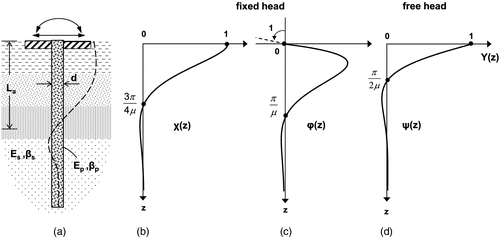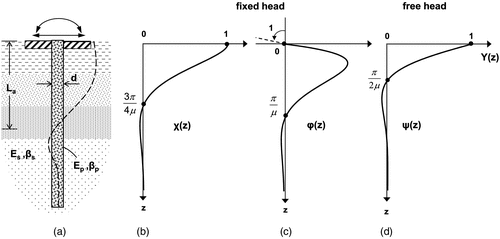After the final determination of the load on the structure, a structural analysis is carried out to determine the forces such as bending moments, shear forces, torsional moments, etc. Idealizing the actual structure is the most difficult part of structural analysis.
Let's discuss the structural elements.
- Frame elements: Beams and columns are modeled primarily with frame elements.
- Shell Elements: Thinner elements like slabs, shear walls, etc. are modeled using shell elements. Furthermore, this element takes into account actions outside the plan.
- Plate Elements: Plate elements are used to shape thicker elements such as pile tops.
- Membranes: When we need membrane action, we use these types of elements. When there are no out-of-plane actions or when we need membrane action, this element is useful.
Foundation modeling techniques used in structural analysis
For some structures it is very important to take into account the interaction between the foundation and the superstructure. However, it is not absolutely necessary to always take this effect into account.
Especially for tall buildings and different terrain conditions, it is advisable to take into account the impact of the foundation on the superstructure.
Furthermore, in the context of basic modeling, the following can be highlighted.
- If the foundation is not modeled together with the superstructure, the pin supports will be considered at foundation level. This creates zero bending moment at the foundation level and only axial loads are transferred to the foundation. Furthermore, considering the pin support at the foundation level increases the stiffness at the higher level or can be expressed as considering a lower stiffness near the foundation level.


- During actual construction, moments are transferred from the superstructure to the foundation. However, this is not significant.
- We can consider the fixation and model the superstructure considering the fixed support conditions. In these situations, the foundations must be designed for the bending moment caused by the superstructure.
- If lateral loads act on buildings, these effects must be taken into account during analysis and design. Tall buildings in particular are subject to significant lateral loads that the foundation system must withstand. In these cases, bending moments and shear forces must be taken into account in the design. Especially if foundations are modeled separately, lateral loads from the superstructure must be added to the foundation model. The following figure shows this consideration of lateral loads on a pile foundation.


- To counteract these effects, basements are built into tall buildings. Additionally, they can be used for installations such as vehicle parking and service requirements. The number of basements depends on the lateral loads acting on the building.
- Additionally, the compacted soil around the basement creates passive pressure as the building tries to move toward the ground. Therefore, the effect of basement walls could be taken into account in the structural analysis.
- Most often, spring elements are used to shape the soil under the foundation. The pile is supported by springs and springs are placed under the footings to represent the behavior of the soil. Other methods, such as soil finite element modeling, could also be used.


- The figure above shows one of the methods for considering the behavior of foundations in structural analysis.
Short circuit of structures
A structure is subject to shortening under load and due to the time-dependent parameters of construction materials.
- Elastic shortening
- Shortening due to concrete creep
- Shortening due to shrinkage
These effects must be taken into account during structural analysis and design. Furthermore, when sizing the elements, care must be taken to ensure that the shortening occurs uniformly on the other floors. This reduces the additional stresses placed on other elements.
Layout planning is carried out to maintain the vertical tension of axially loaded elements at the same level. However, it is not always possible to place them on the same level. The following image from the Internet shows the shortening of the buildings.


Close attention must be paid to this during static calculations and construction in order to reduce additional loads on structural elements after construction.
The following figure shows the method for calculating the additional bending moment due to relative movement. If there is a relative displacement between two elements, an additional bending moment occurs.


In general, shear walls are subject to less axial stress compared to columns because shear walls have a larger cross-section. This leads to different shortenings between columns and load-bearing walls. Then additional bending moments occur.
We connect the beams between supports and shear walls. When differential shortening occurs, it causes additional stress. Shear walls are comparatively thinner than supports. The additional bending moment can cause cracks in the shear walls if their stiffness is insufficient. Therefore, care must be taken when planning tall buildings and their structural systems must be adjusted accordingly.
Construction phase analysis
Taking into account the technical aspects of the construction phase is very important in the analysis and planning of tall buildings. If we consider the entire structure with a single model, it means that the entire structure is built at once.
However, in reality this does not happen.
If we analyze the structure as a single-phase construction, the actual distribution of stresses in the different phases of the construction is not taken into account.
For example, the overall settlement of elements is taken into account to create tension. Remember that beams connected to the load-bearing wall and column will have relative displacement due to shortening. In a single-stage design, the total shortening affects the elements and additional stresses are displayed according to the stiffness.
If we have done the analysis during the construction phase, the effect will be reduced. The effect of elastic short circuit is just the short circuit caused by the axial load of the column from above. Likewise, other effects are also significantly reduced.
Torsional effect on structures
Buildings are subject to torsion when the center of rigidity and geometric center do not coincide. When designing tall buildings, one generally tries to avoid torsional effects and preserve translational modes like the first two modes.
When the torsional mode dominates, structural analysis becomes more complicated and design becomes more difficult. Furthermore, the impact on the structure is more critical when cyclic loads are applied to the building.


When designing a tall building, it is advisable to plan the arrangement of shear walls and columns so that the torsional effect on the building is minimized.
Modal forms in structural analysis
The modal form of the structure is very important, and the period of each modal mode is even more important. It is an indication of structural behavior when the structure is subjected to stress.
As a general rule, the construction time of a building can be calculated as 0.1 s per floor. For example, if the building has 20 floors, the construction time could be 0.1 x 20 = 2 s.
The values of each mode must be checked, and special attention must be paid to this in tall buildings. The period directly affects the comfort of the tall building.
Drift and lateral deflections
Drift index or lateral drift and deflection of buildings refers to the lateral movement of the building.
Relative ground motion is discussed using the drift index.
Lateral deflection limit = h/500
Drift = 1/500
Where “h” is the height of the building.
Drift and lateral deflection provide limits to prevent structures from failing due to excessive deflections.
Furthermore, these values reflect the comfort level of the building. When the lateral distance is greater, the period of the building is greater. This can lead to greater acceleration of the building, which may exceed the permitted comfort level.
The increase in drift is due to insufficient lateral stiffness of the lateral load support systems. For more information about the different structural forms to be used in buildings, see article 14 Types of Structural Forms for Tall Buildings.
Systems that support lateral loads must be reinforced to reduce lateral deflection. The article Systems for absorbing lateral loads For more information you can contact us.
Linear analysis and nonlinear analysis
Generally, we analyze structures using linear analysis. This is done for normal loads. However, for exceptional loads, we consider non-linear analysis.
We take into account extraordinary effects, such as seismic loads, in the non-linear part.
If the structure allows behavior in the linear range even under extraordinary loads such as earthquakes, it will be necessary to increase structural stiffness. This causes additional costs for the customer.
Furthermore, when we try to maintain the structure in the linear region during exceptional loading (seismic loading), designers must pay attention to the analysis result. In a non-linear analysis, the ruin of structures is included. However, a linear analysis reports forces for applied loads without providing any evidence of failure. Therefore, special attention should be paid to this.
Use of structural analysis software
When analyzing tall buildings, the use of structural analysis software is mandatory. We cannot do the analysis manually.
Today there are numerous software programs that can be used for analysis.
- SAP2000
- Etabs
- StaadPro
- Midas
The above software is most popular in the industry.
The most important thing in structural analysis is to validate the computational analysis model before using the analysis results for design.

